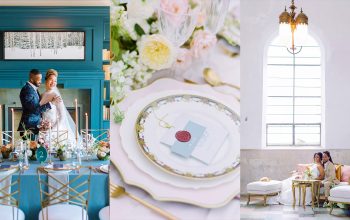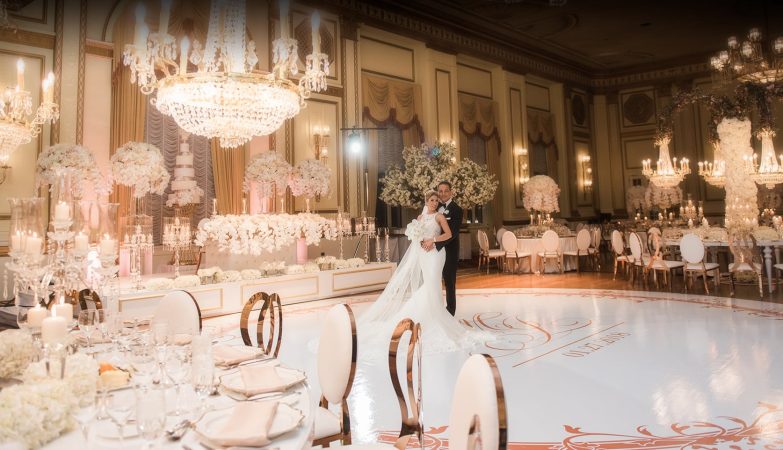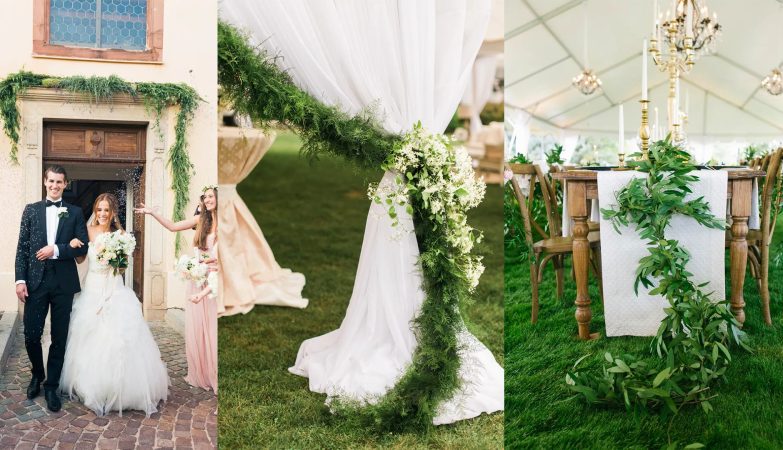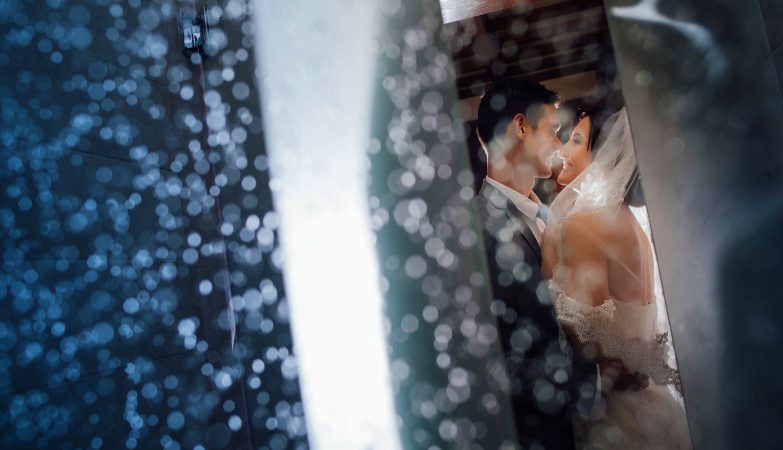
Creating your album is, yes, a tedious process, but it’s also one of the most rewarding parts of wedding planning. You’ll have a beautiful album for a lifetime. Your instinct may be to jump right in, tear through your proofs and immediately figure out what should go into your album. But slow down and follow our plan to skip some stressed-out feelings, and we promise you’ll have a picture-perfect book that tells a wonderful story.
Don’t Go It Alone
Your first look at the wedding photos can be overwhelming (to say the least), so you’d be wise to wait until your new spouse (or friend, sister or mother) is present to take your first glance. But be careful whom you choose. If your mother’s comments tend to stress you out-however well meaning-ask your maid of honor instead, and involve your mom later in the process, if you want. It’s likely that all proofs will be on the photographer’s website, and you’ll be given a password to see them all, but if you do get hard copies, do not lend anyone your proofs. No one will care for them the way you do, and they may get lost or damaged.
Sort Wisely
Go with your gut on your first look and write down the shots that jump out at you. Don’t overthink it. Just pick 20 to 30 of your favorites. The next step is to weed out the bad pictures (of blinking guests, for example).
Now you’re ready to group the proofs into categories: getting ready, ceremony, cocktail hour, reception, special moments (like cake cutting, speeches, candids, portraits, dancing and the getaway). How many pictures you have in each category (and how many categories you’ll have) depends on a lot of things, but keep in mind that eventually you’ll put only 50 to 100 photos in your finished album.
Decide On An Album Type
There are many options for albums. You can go traditional with a classic matted style album, which is generally bound like a book in which frames hide the edges of the photos. Depending on the quality (traditional albums come in leather, canvas and even faux leather or suede) these albums can be very sturdy and tend to endure age and use better than other styles.
Want something more creative? Try a fabric album. Many photographers offer custom-bound Japanese silk albums in which photos are mounted directly onto deckled-edge pages in a hand-embossed image area. These exquisite (and expensive) albums are delicate-be sure yours comes with a protective sleeve.
A modern option: coffee-table books. Like a magazine created just for you, these albums come in a range of colors and materials, and the layout possibilities are endless. And like books, they’re printed on a press, so rather than actual photos, you have pages with your photos printed on them. The set-up fees are expensive, but once you have a layout, you can often order multiple albums for a fraction of the initial cost.
Not interested in an actual photo album? Arrange in advance to buy your digital files from your photographer. You can keep them on your hard drive, upload them to a photo site for sharing, make DVD slideshows and order prints whenever you want.
Take Your Time
Choosing photos for a wedding album takes six hours on average, so don’t expect it to be a quick task. You worked hard to plan your wedding-taking time to reflect with your fabulous photos is part of the payoff. But try not to lose momentum after the wedding. Make your initial selections (the 20 to 30 faves) even if you’re all wedding-ed out.
Tell Your Story
Imagine you’re illustrating a book that has no text-keep the “story” of your day in mind. You’ll also want to make sure all of the important characters are represented. You may have picked all the best shots of your gorgeous self, and the wedding party and your parents are usually included in formal shots, but what about your grandparents, siblings, close friends or favorite cousins?
In addition to representing a range of events and individuals, vary images by look and type. Modern couples tend to favor a photojournalistic style, emphasizing lots of candid shots, but make sure you have some formal posed shots too. Mixing black-and-white or sepia with color shots will also give your album a dynamic edge. Many photographers suggest a 1:3 black-and-white to color ratio, but anything goes.
And don’t forget the details that give the album depth and flair, such as close-ups of flower arrangements, favors and food, and an overhead shot of the venue.
pro tip: group the detail shots so as not to overpower the people shots.
Lay It Out
Now the fun part: putting it in order. Chances are, your photographer will have all of the proofs in order of the day’s events for you to look at them on-screen on their website. Remember: You’re telling a story. And while it might be easiest to arrange your album chronologically, it’s okay to deviate if you wish.
Another important concept to consider is flow. Pay attention to how one segment leads into another. One way to make your album smooth yet dynamic is to choose meaningful transition shots. For example: A shot of the couple walking away from the ceremony venue holding hands might be a great transition into the reception portion of the album.
You can also experiment with page layouts at this point. Some pages will feature one 8″x10″ portrait, while others will have a 5″x7″ staggered with smaller shots. Even a program as basic as Microsoft Word can be used to design layouts. See, creating a great album is a snap.
originally posted on theknot.com






